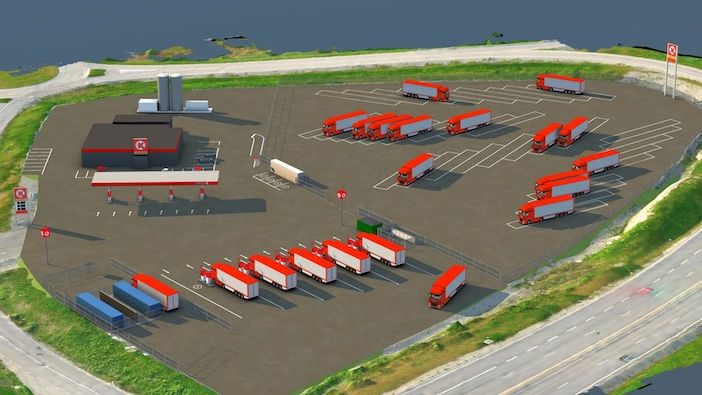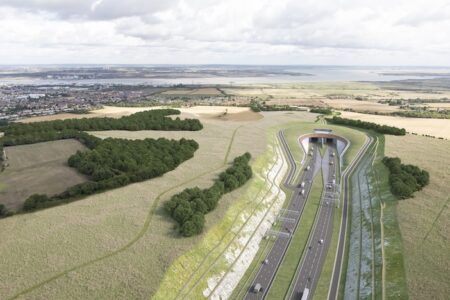A set of measures to speed up the transition to fossil-free transport, is about to be put into action at the Port of Gothenburg, Sweden. The initial step: the first open-access facility in the Nordic region for electric charging and hydrogen gas for heavy goods vehicles, will become operational in 2022.
In February the Tranzero Initiative was presented, a collaborative venture between the Volvo Group, Scania, Stena Line AB, and the Gothenburg Port Authority. The aim is to speed up the transition to fossil-free transport to and from the port. An extensive study of land transport flows to and from the port was launched – now, a plan of measures is being executed that will put theory into practice.
The port aims to reduce carbon emissions from transport to and from the port by 70% through to 2030. On the land side, carbon emissions in the Gothenburg area will need to be cut by 23,000 tonnes if this goal is to be achieved.
Ten charging points for heavy goods vehicles will be available from 2022, with a maximum power capacity of 350 kW-1 MW, when fully developed. While a hydrogen gas pump for heavy goods vehicles will be ready 2023-24, with a capacity of 720 kg – capable of fueling approximately 15 trucks in 24 hours when fully developed.
“Overall, the transition is not moving quickly enough for us to meet our target. Despite an abundance of ambitions and laudable strategies in the transport sector, what is required is greater cooperation if we are to put into effect the across-the-board approach that will be required to accelerate the transition. We embarked on the Tranzero Initiative to do just that,” says Elvir Dzanic, Gothenburg Port Authority chief executive.
Analysis of port data from one million truck movements at the port, 1,000 completed questionnaires by drivers, and numerous in-depth interviews with forwarders and hauliers, has produced new knowledge, resulting in a strategy with concrete measures designed to reduce emissions from transport flows more quickly.
Electrified flows during the first half of 2022
“We have highlighted flows that are particularly suited to the transition process. These are mainly flows that are highly repetitive, involve short distances, and include overnight parking at a depot. By the first half of 2022 we will see electrically powered transport flows in the port area,” says Dzanic.
Within the Tranzero Initiative a whole series of measures have been employed to transform the transport system. These will be put into effect in the next 1-2 years, followed by further measures farther down the line. These measures will be presented in detail as and when they are ready to be rolled out.
“In the immediate future there will be a series of incentives at the terminals to promote fossil-free transport, and also measures where hauliers, forwarders, goods owners, as well as the government and the region are important partners. We have established a fruitful dialogue with all parties concerned regarding their roles,” says Dzanic.
First open-access facility in the Nordic region for charging and hydrogen gas for heavy goods vehicles
The measures to be introduced will begin with the very first open-access facility in the Nordic region for electric charging and hydrogen gas for heavy goods vehicles. The fuel company Circle K will run the station, which will offer charging points, hydrogen gas pumps, and bio-based liquefied fuels.
“We are pleased that as early as next year we will be able to introduce the first measures as part of the Tranzero Initiative. We have been working for a number of years to bring about the transition to fossil-free fuels for passenger cars with the aid of liquefied fuel alternatives and charging points. We are now moving to the next stage with charging points and hydrogen gas for heavy goods vehicles. This is a significant step in the move towards a world that is independent of fossil fuels,” says Johan Söderberg, fuel director at Circle K.






